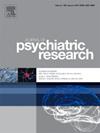Exploring the association between beta-blockers use and sleep complaints in U.S. Adults: An analysis of NHANES data (2011–2018)
IF 3.7
2区 医学
Q1 PSYCHIATRY
引用次数: 0
Abstract
Purpose
The primary objective of this investigation was to examine the potential association between the use of beta-blockers among the adult population in the United States from 2011 to 2018 and the occurrence of sleep complaints in adults.
Methods
This study utilized a nationally representative sample from the 2011–2018 National Health and Nutrition Examination Survey (NHANES). Using weighted multivariable logistic regression adjusted for demographics, comorbidities (hypertension, diabetes), and lifestyle factors (smoking, exercise), we assessed associations while controlling for confounders through propensity score matching. Formal interaction tests evaluated effect modification by age, race, diabetes status, and physical activity levels. NHANES sampling weights ensured nationally representative estimates.
Results
This study of NHANES 2011–2018 data (n = 17,391) revealed significantly higher prevalence of sleep disturbances among beta-blocker users versus non-users (46 % vs 29 %, P < 0.001), an association that remained significant after adjustment (43 % vs 37 %, P < 0.01). Notably, while users demonstrated longer median sleep duration (8 h vs 7 h) and higher proportion of ≥9 h sleepers (19.7 % vs 14.5 %), their sleep quality was significantly impaired, presenting a characteristic “sleep duration-quality paradox”. Subgroup analyses further identified particularly elevated risk among adults <40 years (OR = 3.61, 95 %CI:2.05–6.34), physically active individuals, and non-diabetic patients.
Conclusions
This study establishes beta-blockers as an independent risk factor for sleep disturbances (29 % increased risk) while paradoxically prolonging sleep duration at the expense of sleep quality. The high-risk triad (adults <40 years, physically active individuals, and non-diabetic patients) warrants prioritized sleep monitoring in clinical practice.
探索美国成年人β受体阻滞剂使用与睡眠抱怨之间的关系:对NHANES数据(2011-2018)的分析
本研究的主要目的是研究2011年至2018年美国成年人中β受体阻滞剂的使用与成年人睡眠抱怨的发生之间的潜在关联。方法本研究利用2011-2018年国家健康与营养检查调查(NHANES)的全国代表性样本。使用加权多变量logistic回归校正了人口统计学、合并症(高血压、糖尿病)和生活方式因素(吸烟、运动),我们评估了相关性,同时通过倾向评分匹配控制混杂因素。正式的相互作用测试评估了年龄、种族、糖尿病状况和身体活动水平对效果的影响。NHANES抽样权重确保了具有全国代表性的估计。结果:这项对NHANES 2011-2018年数据(n = 17,391)的研究显示,β受体阻滞剂使用者的睡眠障碍患病率明显高于非使用者(46%对29%,P <;0.001),调整后相关性仍然显著(43% vs 37%, P <;0.01)。值得注意的是,虽然用户表现出较长的中位睡眠时间(8小时vs 7小时)和较高的睡眠时间≥9小时的比例(19.7% vs 14.5%),但他们的睡眠质量明显受损,呈现出典型的“睡眠时间-质量悖论”。亚组分析进一步发现,40岁以上的成年人(OR = 3.61, 95% CI: 2.05-6.34)、身体活跃的个体和非糖尿病患者的风险特别高。本研究确定-受体阻滞剂是睡眠障碍的独立风险因素(增加29%的风险),同时以牺牲睡眠质量为代价延长睡眠时间。高危人群(40岁以上的成年人、身体活跃的个体和非糖尿病患者)在临床实践中需要优先进行睡眠监测。
本文章由计算机程序翻译,如有差异,请以英文原文为准。
求助全文
约1分钟内获得全文
求助全文
来源期刊

Journal of psychiatric research
医学-精神病学
CiteScore
7.30
自引率
2.10%
发文量
622
审稿时长
130 days
期刊介绍:
Founded in 1961 to report on the latest work in psychiatry and cognate disciplines, the Journal of Psychiatric Research is dedicated to innovative and timely studies of four important areas of research:
(1) clinical studies of all disciplines relating to psychiatric illness, as well as normal human behaviour, including biochemical, physiological, genetic, environmental, social, psychological and epidemiological factors;
(2) basic studies pertaining to psychiatry in such fields as neuropsychopharmacology, neuroendocrinology, electrophysiology, genetics, experimental psychology and epidemiology;
(3) the growing application of clinical laboratory techniques in psychiatry, including imagery and spectroscopy of the brain, molecular biology and computer sciences;
 求助内容:
求助内容: 应助结果提醒方式:
应助结果提醒方式:


